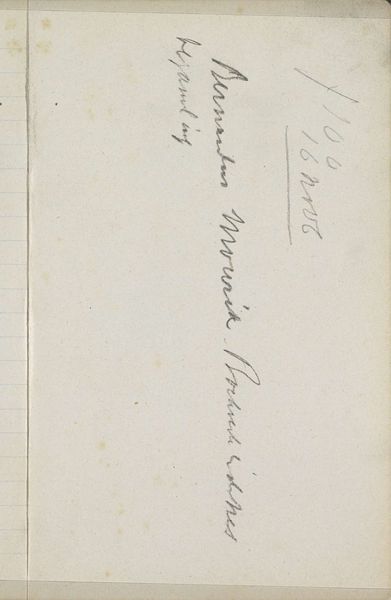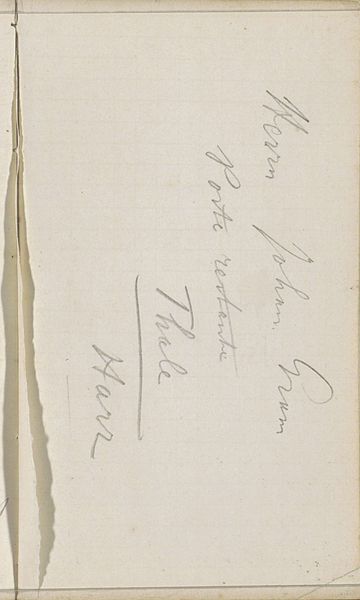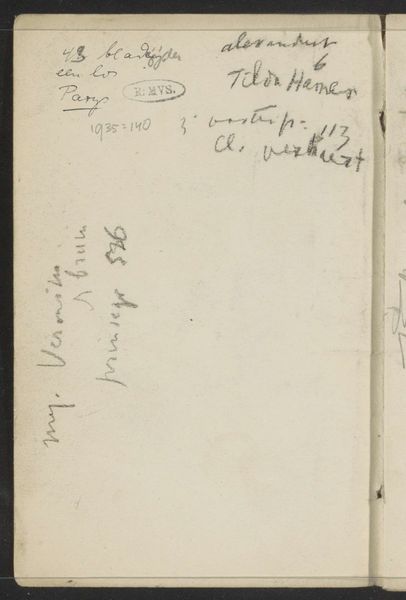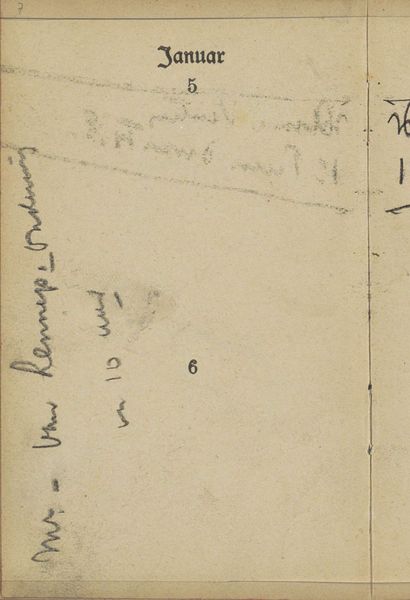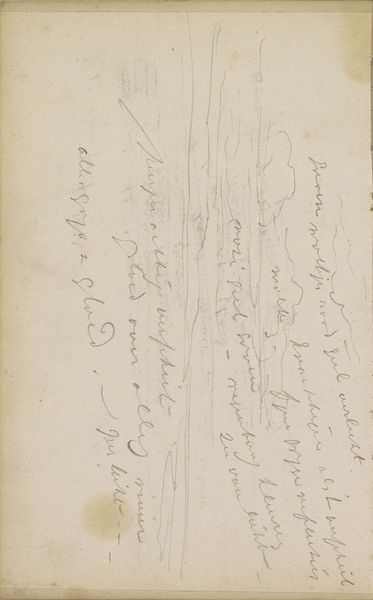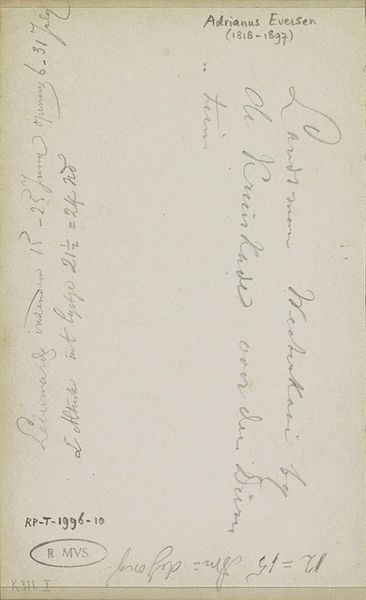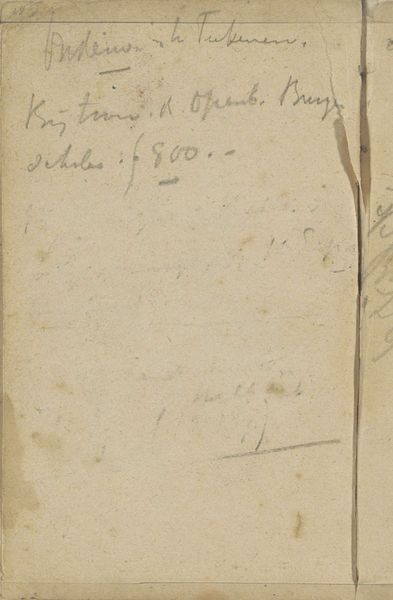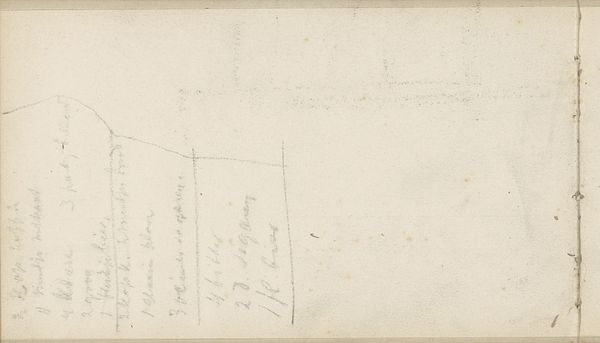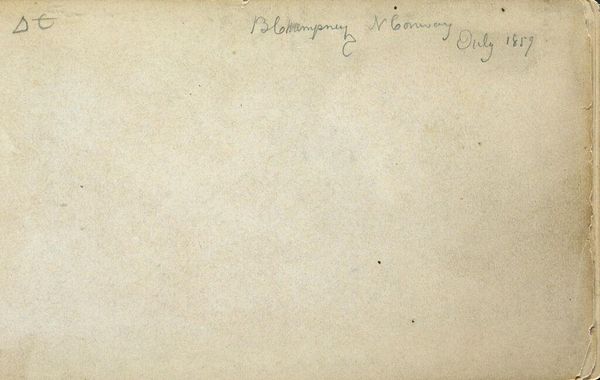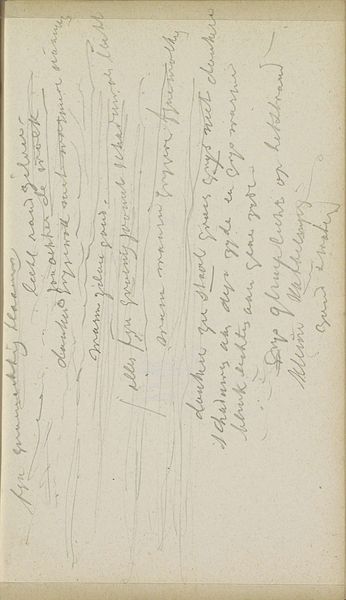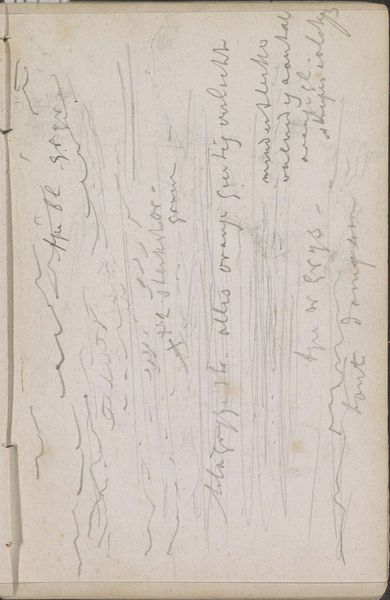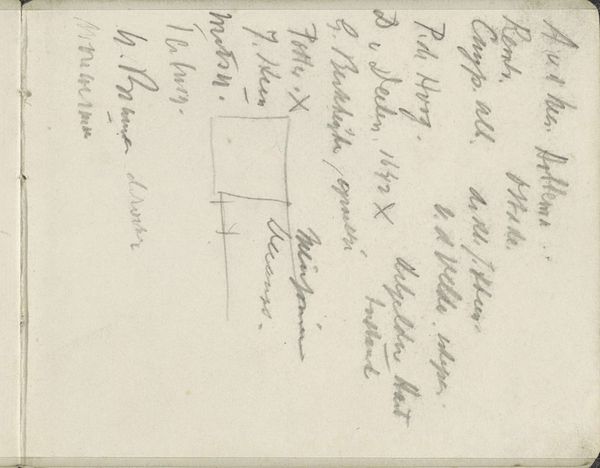
Copyright: Rijks Museum: Open Domain
Editor: We're looking at "Annotaties" by George Hendrik Breitner, from around 1903, housed here at the Rijksmuseum. It's a drawing, ink on paper, with some notations across the surface. It feels…utilitarian. More like a ledger page than what I traditionally think of as art. What do you see in this piece? Curator: I see the residue of artistic labour. It’s not just about the image, is it? Consider the paper itself, likely a readily available material, inexpensive, hinting at the artist's economic reality. The ink, too, a practical medium, permanent but immediate. Breitner wasn't precious; this was about documenting, perhaps annotating a photograph. What does the script itself tell you? Editor: Well, some looks like names and places. Almost like he was taking notes while out in the field? So the ‘artwork’ then becomes not just the drawing, but the entire process of its making. Is that what you mean? Curator: Precisely! Breitner blurs the lines between the studio and the street. He isn’t creating high art, hermetically sealed from the everyday, he is deeply embedded within the urban landscape, recording and processing it through readily available materials. We should also acknowledge that those notes are now presented in the hallowed halls of the museum, in effect being treated as "high art" due to a change of context, thus making it more complicated. Editor: That's really fascinating, the way you're bringing up questions of labor and context with simple materials like paper and ink. I didn’t initially think about this piece that way, more focused on the immediate image rather than the process behind it, or the labor! Thanks! Curator: The most mundane objects often tell the richest stories if we look closely enough, especially considering questions of access and consumption. A simple drawing can be a powerful document of material culture and artistic process.
Comments
No comments
Be the first to comment and join the conversation on the ultimate creative platform.
